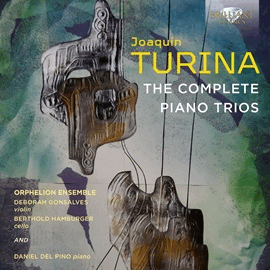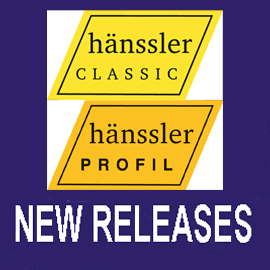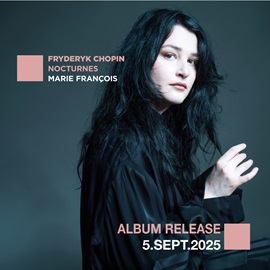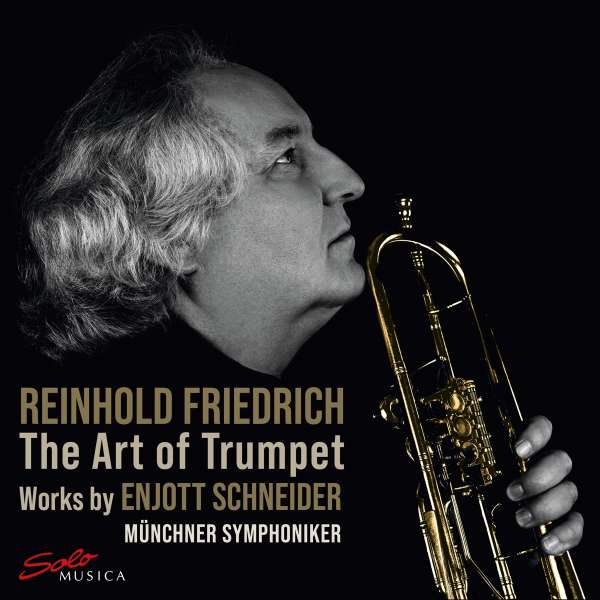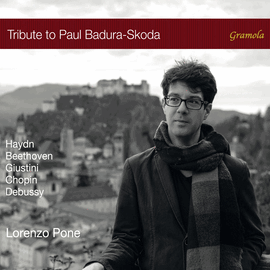Dieses Programm mit Trompetenkonzerten von Enjott Schneider (*1950) beginnt mit dem in den Ecksätzen höchst virtuosen Konzert Vivaldissimo, das ein sehr stimmungsvolles und reizend melodiöses, mitunter auch sehr mysteriöses Adagio enthält. Dass Schneider der Musik ein barockes Kleid anzieht, heißt nicht, dass er auch nur entfernt imitieren würde. Es ist eine sehr originelle und unmittelbar attraktive Komposition.
Altai, Traces to Infinity ist ein Konzert für Solovioline und Piccolotrompete, « inspiriert von der unendlichen Weite und Schönheit Kasachstans und seiner Ostbegrenzung hin zur Mongolei, China und Sibirien », sagt der Komponist.
Die Natur und die Mythen der Region haben Schneider zu einer schillernden Musik inspiriert, die mit zwei schnellen und zwei langsamen Sätzen nicht nur abwechslungsreich, sondern sehr evokativ ist. Schneiders Einfallskraft ist einmal mehr absolut bewundernswert, nicht zuletzt in den Dialogen zwischen den beiden Soloinstrumenten, die, obwohl sehr verschieden, in ein exquisites Gespräch geraten.
L’angelica Farfalla vereint originelle Paraphrasen über Melodien von Caccini, Marcello, Händel und Vivaldi in einem Konzert für Piccolotrompete, welches das Leben des engelhaften Schmetterlings darstellen soll, « der dem dunklen Erdenleben des Wurms entflohen ist ». Das ursprüngliche Material verwendet Schneider in einer sehr bildhaften Sprache, die deutlich seine eigene ist und die Kontraste zwischen der Schwerfälligkeit des Wurms und der grazilen Leichtigkeit des Schmetterlings sehr gut darstellt.
Das vierte Stück, Ikarus, ein Konzert für Piccolo und Orchester,
« thematisiert jenen Weg ins Licht, von dem mit großer Übereinstimmung bei allen Nahtoderfahrungen berichtet wird: die Dunkelheit weicht einem Übergang in ein helles schattenloses Licht und Frieden. » Die Stärke der Komposition liegt, wie so oft bei Enjott Schneider, im deskriptiv Ruhigen, sei es nun dunkel oder hell, oder eine Kombination beider Zustände, die dann besonders reiz-und stimmungsvoll wird.
Die exzellenten Interpretationen von Reinhold Friedrich, Hannes Läubin, Gregory Ahss, sowie den Münchner Symphonikern unter der inspirierten Leitung von Martin Baeza-Rubio geben der Musik alles, was sie braucht, um den Hörer anzusprechen und zu inspirieren. Denn da liegt die Kraft dieser Musik, die aus offenbar nie versagender Quelle anregend und evokativ wird, mit Klangwelten, die sich durch verblüffenden Einfallsreichtum und große Inspirationskraft auszeichnen. Das Repertoire der Trompetenkonzerte erfährt mit diesen vier Kompositionen eine markante Bereicherung.
This program of trumpet concertos by Enjott Schneider (*1950) begins with the concerto Vivaldissimo, which is highly virtuosic in the outer movements and contains a very atmospheric and delightfully melodic, at times also very mysterious Adagio. That Schneider puts a baroque dress on the music does not mean that he imitates even remotely. It is a highly original and immediately attractive composition.
Altai, Traces to Infinity is a concerto for solo violin and piccolo trumpet « inspired by the infinite vastness and beauty of Kazakhstan and its eastern border towards Mongolia, China and Siberia, » says the composer.
The nature and myths of the region have inspired Schneider to create a dazzling music that, with two fast and two slow movements, is not only varied but highly evocative. Schneider’s inventiveness is once again absolutely admirable, not least in the dialogues between the two solo instruments, which, though very different, engage in exquisite conversation.
L’Angelica Farfalla brings together original paraphrases on melodies by Caccini, Marcello, Handel and Vivaldi in a concerto for piccolo trumpet meant to represent the life of the angelic butterfly « that has escaped the dark earthly life of the worm. » Schneider uses the original material in a very pictorial language that is distinctly his own, and which does a very good job of portraying the contrasts between the ponderousness of the worm and the graceful lightness of the butterfly.
The fourth piece, Icarus, a concerto for piccolo and orchestra,
« thematizes that path into the light that is reported with great consistency in all near-death experiences: darkness gives way to a transition into bright shadowless light and peace. » The strength of the composition lies, as so often with Enjott Schneider, in the descriptively quiet parts, dark or light, or a combination of both states, which then becomes particularly charming and atmospheric.
The excellent interpretations by Reinhold Friedrich, Hannes Läubin, Gregory Ahss, and the Munich Symphony Orchestra under the inspired direction of Martin Baeza-Rubio give the music everything it needs to captivate and inspire the listener. For there lies the power of this music, which becomes stimulating and evocative from an apparently never-failing source, with sound worlds characterized by amazing ingenuity and great inspirational power. The repertoire of trumpet concertos experiences a striking enrichment with these four compositions.




